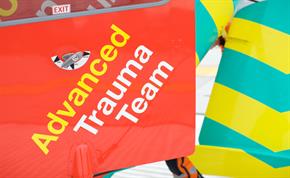
Spinal immobilisation is a much-debated topic and there is a changing thought process surrounding the care of patients with possible or suspected spinal injuries; this article identifies the current standard for immobilisation and draws attention to some possible changes in the future.
So, when should I immobilise?
Manual immobilisation should be undertaken when you clinically suspect the presence of a possible spinal cord injury (SCI) and must be continued until a more detailed assessment of the patient has been undertaken. A patient should be fully immobilised if any indicators are present.
Several studies have looked at the need for immobilisation and the need for imaging and one of these was a small prospective pre-hospital study, which showed that in the presence of all the following criteria, you can look to exclude significant spinal injury:
These criteria are supported by the Clinical Practice Guidelines 2013 (JRCALC) and should be applied to prevent unnecessary immobilisation (or use the ‘immobilise’ algorithm on page 228 of the large book or page 39 of the pocketbook). This also improves patient experience and reduces the on scene need for immobilising. This suggests mechanism of injury alone is not a strong indicator of whether immobilisation is required, though staff should remain cautious as appropriate. It should be stressed that recent cases of missed spinal injuries were related to a combination of mechanism and pain, take a moment with any patient to consider this, combined with the above points on whether an injury is more likely and you should immobilise. This is subject to national debate and is being reviewed by the Clinical Practice Guideline Group (JRCALC) for consideration on any UK practice change.
Board v scoop:
The Clinical Practice Guidelines 2013, Trauma East Manual of Procedures and Operations2 (TEMPO2, 2015) and the Trust’s Clinical Manual supports the use of the orthopaedic (scoop) stretcher as the primary method for immobilisation and transportation to hospital.
The long board (spinal board) should be seen as an extrication devise, and may be used for immobilisation as an alternative in exceptional circumstances.
Immobilisation on the scoop:
Preventing heat loss:
In trauma patients, coagulopathy is negatively affected if the patient becomes cold. The patient requires adequate exposure to assess and manage injuries, but we must also prevent heat loss in the pre-hospital setting. A trauma patient should have a body temperature maintained between 35.5 and 36.50c.
This can be achieved by:
The future:
There is much debate amongst the pre-hospital fraternity surrounding the importance (or not) of immobilisation. The Faculty of Pre-hospital Care is in the process of updating their consensus statement. Whilst this is ongoing, EEAST staff are asked to continue to practice as above.
If a range of consensus statements are published, the Trust will consider alternate clinical practice.
If you have any questions or comments on the details of this article please comment below and we will respond, alternatively please feel free to email majortrauma@eastamb.nhs.uk. Look out for articles coming soon on haemorrhage control and neuroprotection.
Published 12th May 2015